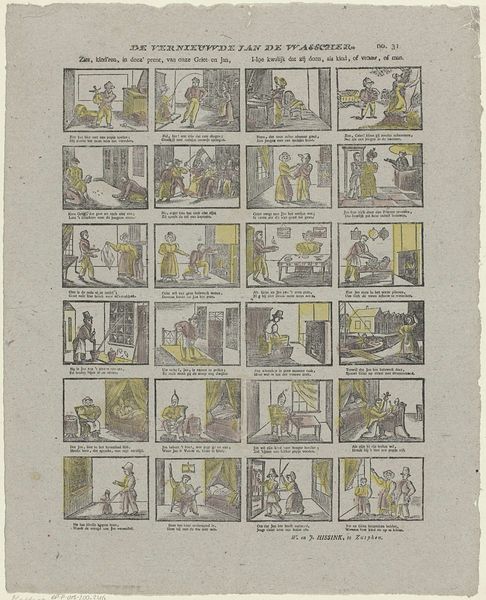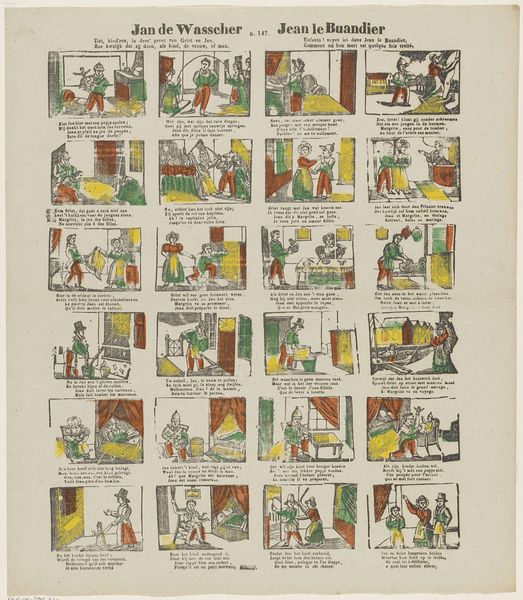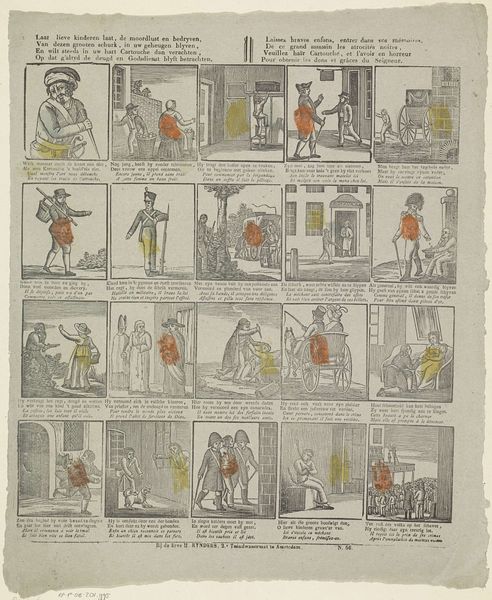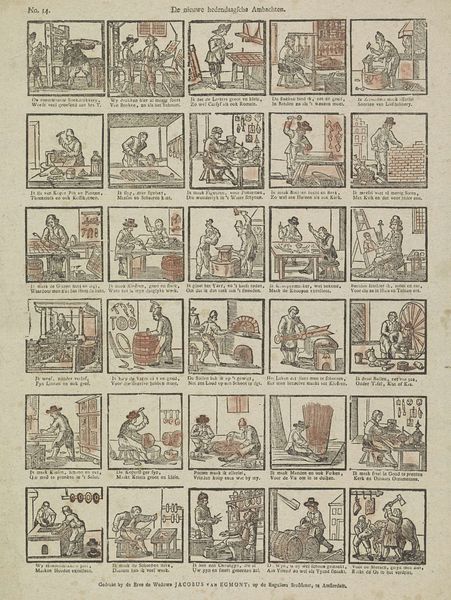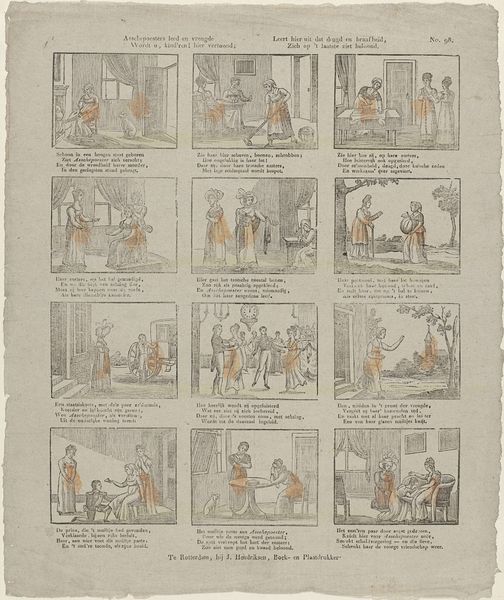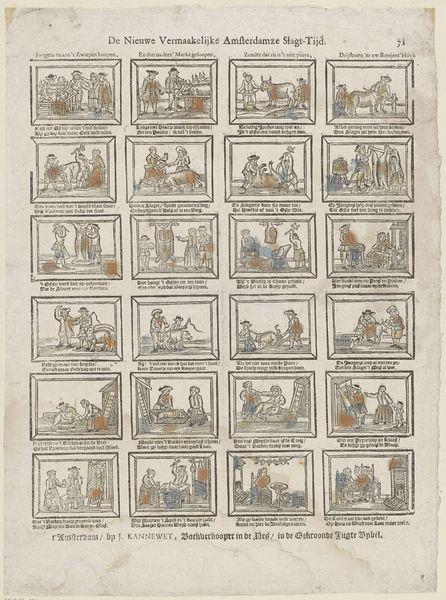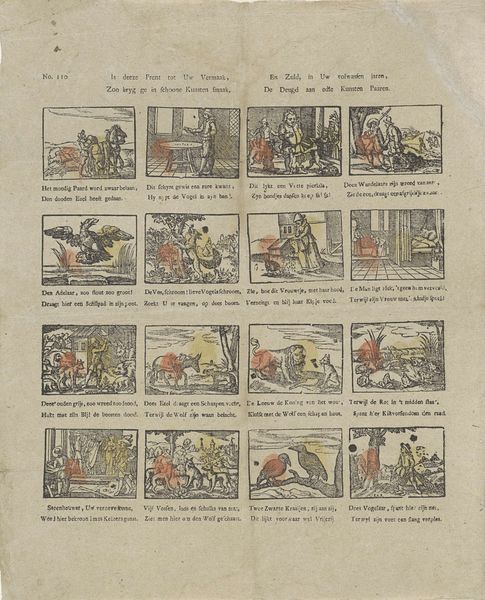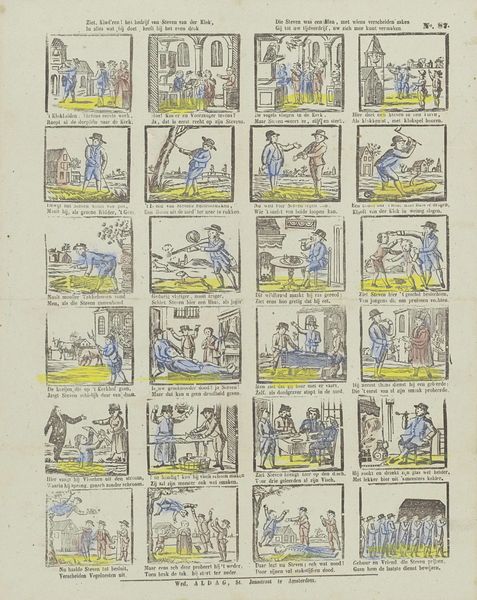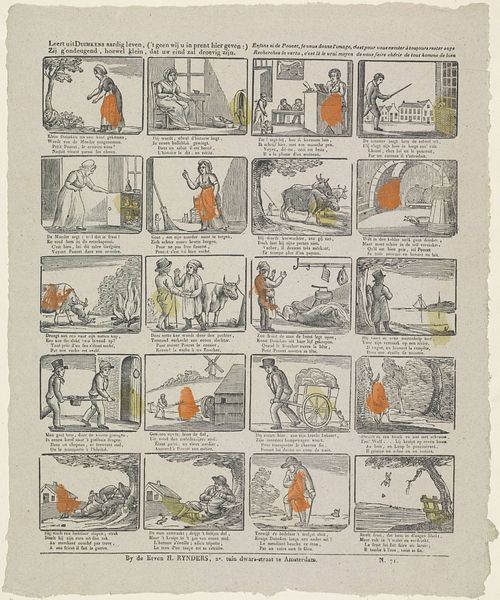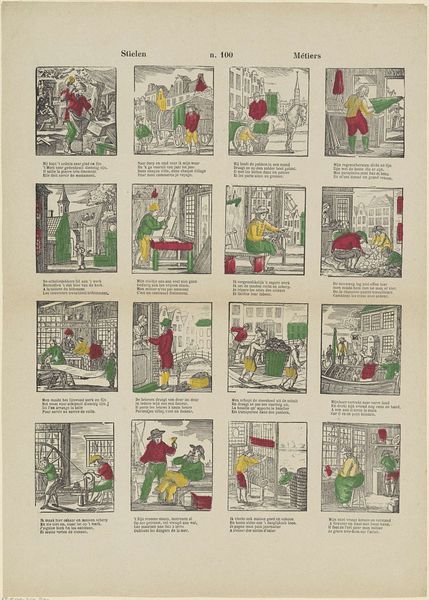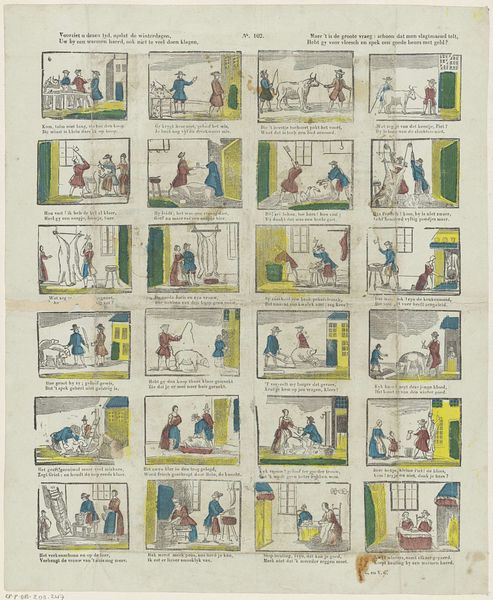
Hier vindt de jeugd, tot haar gerijf, / Tijl Uilenspiegels snaaksch bedrijf 1822 - 1849
0:00
0:00
graphic-art, print, engraving
#
graphic-art
#
aged paper
#
quirky sketch
#
narrative-art
# print
#
old engraving style
#
sketch book
#
comic
#
genre-painting
#
engraving
Dimensions: height 430 mm, width 342 mm
Copyright: Rijks Museum: Open Domain
Curator: Here we have "Hier vindt de jeugd, tot haar gerijf, / Tijl Uilenspiegels snaaksch bedrijf" – an engraving by Mindermann & Co., sometime between 1822 and 1849. Look at how the narrative unfolds panel by panel, almost like a comic strip! Editor: Yes, it's charming! The paper looks so aged, and the scenes, while small, are full of energy. What strikes me is how mass-produced it appears. How does its being a print, and seemingly intended for a wide audience, affect how we should understand the work? Curator: Precisely! The means of production is key. This isn't some unique, precious painting; it's an engraving, created through labor, designed for reproduction and wide consumption. Consider the role of Mindermann & Co. – were they artists, publishers, or a combination? This suggests an early form of cultural industry. How do you think the availability of such prints shaped ideas about art and storytelling? Editor: I see your point! It moves away from this idea of a singular artistic genius and shifts focus to workshops, commerce, and a broader societal interaction with imagery. These weren’t precious objects. Curator: Exactly. It democratizes the narrative of Tyl Ulenspiegel – a folk hero, in a time before movies and widespread literacy. The engraving’s cheapness allowed stories to be consumed by almost everyone. What impact does that have? Editor: So the value lies not only in the image itself but in the whole production and consumption cycle and what it signifies within 19th-century society... the industrial element! Fascinating! Curator: Indeed. Considering art as a product, reveals so much about social relations. Now, how might the scenes depicted relate to the lives of the people consuming these images? Editor: That’s a great question – gives me something to consider on my next visit to the Rijksmuseum!
Comments
No comments
Be the first to comment and join the conversation on the ultimate creative platform.
